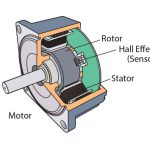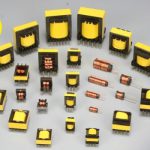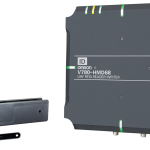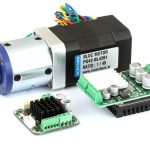
Introduction
In compact, portable electronic devices where space is at a premium, traditional slide switches may not suffice. This is where ultra-small slide switches come into play––vital components in modern electronic design, offering compact, reliable solutions for controlling the functionality of a variety of devices. These switches, acting as gatekeepers, are extensively utilised in various applications and equipment, including wearable technology, portable devices, and medical equipment. Our comprehensive guide covers everything you need to know about ultra-small slide switches, providing insights into their types, applications, selection criteria, and circuitry integration into electronic systems.
Introduction to Ultra-Small Slide Switches
Ultra-small slide switches, also called ultra-miniature slide switches, are miniature versions of conventional slide switches designed to control the flow of electricity within a circuit by sliding a knob or lever back and forth. They comprise a small housing that contains electrical contacts and a slider mechanism that either makes or breaks the circuit when moved. Unlike traditional switch types that might require pressing or toggling, slide switches are characterised by their linear motion. The compact size of these electromechanical devices is independent of their functionality and reliability, making them a preferred choice for designers looking to optimise space without sacrificing performance in various applications.
Design and Construction of Ultra-Miniature Slide Switches
The design of ultra-small slide switches centers around compactness and efficiency. They typically comprise a plastic or metal housing, a sliding actuator, and contact points made of conductive materials like copper or silver alloy. The metal or plastic housing provides structural integrity to the switch, ensuring longevity and reliable connection and disconnections. The simplicity of their design belies the precision engineering required to guarantee reliability and durability, especially in devices subject to frequent use or harsh conditions.
Uncovering Popular Types of Ultra-Small Slide Switches
Ultra-small slide switches come in several types, each catering to specific requirements based on current rating, size, and switching functionality. Among the waterproof slide switches, surface-mount slide switches, low-profile slide switches, and high-power slide switches, the most common types include:
- Single Pole Single Throw (SPST): The simplest type, offering an on-off function.
- Single Pole Double Throw (SPDT): Allows switching between two circuits.
- Double Pole Single Throw (DPST): Controls two circuits with a single action but does not alternate between circuits.
- Double Pole Double Throw (DPDT): Offers the most flexibility by controlling two circuits and allowing the user to alternate between them.
Versatile Applications of Ultra-Small Slide Switches: Use Cases
Ultra-small slide switches find their applications in a myriad of electronic devices. They are especially valued in facilities and applications where space is at a premium, such as in portable electronic devices, wearable technology, and miniature gadgets. These versatile switches are indispensable components in:
- Wearable Technology: Used in smartwatches and fitness trackers to control various functions without adding significant bulk.
- IoT Devices: In Internet of Things (IoT) devices, these switches are significant in user interface design and device control.
- Portable/ Consumer Electronics: Essential in compact devices such as MP3 players, portable gaming systems, smartphones, tablets, and digital cameras for their space-saving advantage.
- Medical Devices: Vital in the design of small, portable medical devices where space is critical, such as insulin pumps and portable diagnostic equipment.
- Automotive Electronics: These switches are employed in automotive applications for functions such as interior lighting control and dashboard settings.
- Industrial Controls: Applied to control panels and equipment where reliable switching is necessary for a compact form factor.
Choosing the Right Ultra-Small Slide Switch: Exploring Its Selection Criteria
Selecting the best ultra-small slide switch involves considering several critical factors related to mechanical and electrical specifications and the environment. These parameters ensure you make an informed decision for your needs and applications. Some of the expert tips and considerations for the functionality and durability of your device include:
- Current and Voltage Rating: It’s crucial to choose a switch that can handle the current and voltage requirements of the application to prevent malfunction or damage.
- Size and Mounting Style: The physical dimensions and mounting options (surface mount or through-hole) must be compatible with the device’s design constraints.
- Material and Durability: The construction material, typically plastic or metal, affects the switch’s durability and suitability for different environments, including those with temperature extremes or chemical exposure.
- Contact Configuration: The choice between SPST, SPDT, DPST, and DPDT depends on the circuit’s needs and the desired functionality.
- Brand and Cost: Opt for an affordable switch with a widespread brand reputation.
Ultra-Miniature Slide Switches: Integration into Electronic Systems
Incorporating ultra-small slide switches into electronic systems requires meticulous planning and design consideration. Some best practices include:
- Circuit Design: Early circuitry integration of the switch in the circuit design phase ensures that the electrical requirements align with the switch’s specifications.
- Physical Layout: Adequate space should be allocated not just for the switch but also for ease of access and operation.
- Testing: Rigorous testing can ensure the switch performs reliably under expected use conditions.
- Compliance: Ensuring the switch meets relevant standards and certifications for safety and performance is crucial, especially in regulated industries like healthcare.
Poised Challenges, Possible Solutions and Future Trends of Ultra-Small Slide Switches
Integrating ultra-small slide switches is not without its challenges, primarily due to their small size. Precision in manufacturing and assembly is paramount to prevent issues like misalignment or insufficient electrical contact. Solutions include the use of high-precision manufacturing techniques and the selection of switches from reputable manufacturers that adhere to stringent quality control standards.
The future of ultra-small slide switches points towards even smaller sizes, enhanced durability, and improved electrical performance to meet technology’s evolving demands. Innovations in materials science and microfabrication techniques will likely play a pivotal role in achieving these advancements.
Takeaway
Ultra-small slide switches are indispensable in the design of compact, efficient electronic devices. Their variety, coupled with their ability to fit into tight spaces without compromising on functionality, makes them an excellent choice for a broad spectrum of applications. By carefully selecting and integrating these switches based on the outlined criteria, designers can ensure the reliability and performance of their devices, paving the way for innovations in electronics that continue to push the boundaries of what’s possible in miniaturisation and functionality.




















